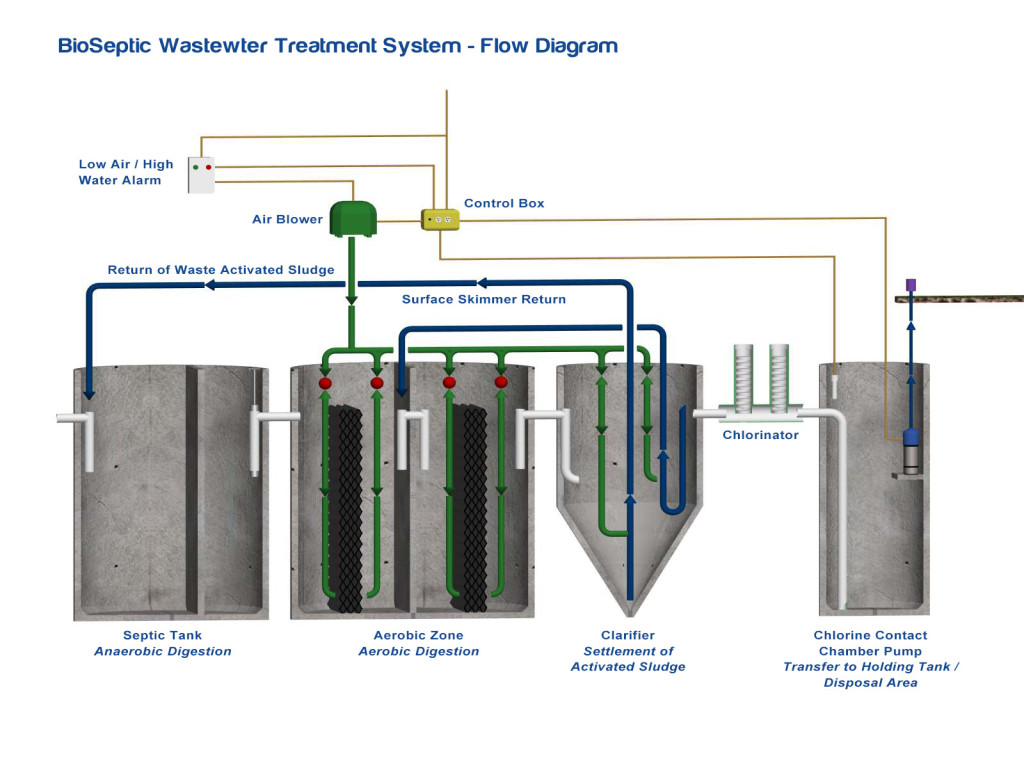
How BioSeptic’s Wastewater Treatment Systems Work

BioSeptic’s Wastewater Treatment Systems
The BioSeptic wastewater treatment system is a compact sewage treatment plant that safely processes all household wastewater and recycles it as clear odourless water to irrigate the garden. This means that the wastewater is treated and recycled to the property where it is produced rather than moving the waste problem to a town sewage treatment plant.
How does BioSeptic’s Wastewater System work?
The BioSeptic process begins when all the wastewater from the kitchen, toilets, bathroom, and laundry drains into the septic tank. The solid waste settles in the septic tank and naturally occurring anaerobic bacteria slowly break it down.
The wastewater overflows into the aeration tank where the air is diffused into two separate aeration chambers to create aerobic bacteria. These quick acting bacteria reduce the sewage to carbon dioxide and water. Because aerobic bacteria breathe oxygen there is no odour. Finally a small amount of chlorine is added to kill any pathogens that have survived the aeration process. The treated water is then suitable to irrigate the garden.
Plants are nature’s best method to take up the nutrients that must be prevented from flowing into streams and rivers, so it is important to have plenty of trees and shrubs to soak up the treated water from the water treatment systems.
It is preferable to recycle and apply a little nutrient every day from an Aerated Wastewater Treatment System (AWTS) rather than in one heavy application that can remain in the soil for a long time before being taken up by plants.
BioSeptic owners are able to enjoy a beautiful garden that is kept green and fertile throughout the year.
